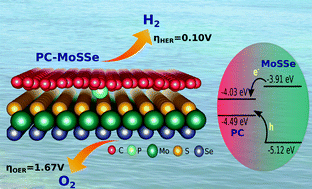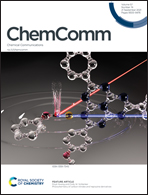Designing an efficient bifunctional electrocatalyst heterostructure†
Abstract
Oxygen and hydrogen evolutions are the two fundamental processes involved in electrocatalytic water splitting. Two dimensional (2D) transition metal dichalcogenides (TMDCs) and graphene-based materials are regarded as the emergent catalysts for the hydrogen evolution reaction (HER) and oxygen evolution reaction (OER). Herein, doped graphene and molybdenum dichalcogenide heterostructures are evaluated for their catalytic activity using density functional theory (DFT). The Janus MoSSe and P-doped graphene heterostructure is found to have the best electrocatalytic activities with smaller overpotential values (ηOER = 1.67 V and ηHER = 0.10 V) as compared to those of the parent monolayers graphene (ηOER = 1.85 V and ηHER = 1.80 V) and MoS2 (ηOER = 2.99 V and ηHER = 1.72 V).

- This article is part of the themed collection: 2021 Emerging Investigators


 Please wait while we load your content...
Please wait while we load your content...